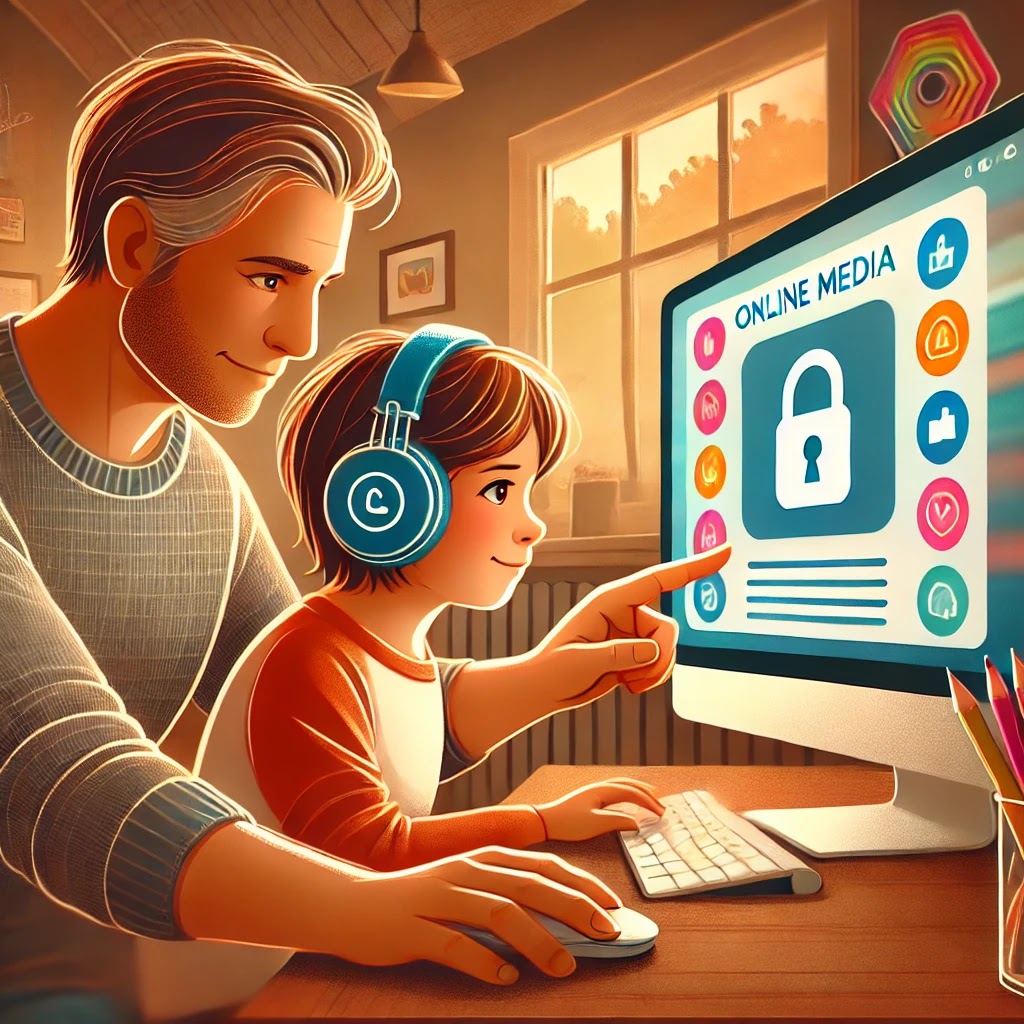 |
| A parent and a neurodiverse child engaging with a computer screen in a warm, supportive home environment, emphasizing online safety. |
In an increasingly digital world, safeguarding children’s online experiences is essential, and this need becomes even more pressing when considering neurodiverse children. Neurodivergent individuals, such as those with autism or ADHD, may encounter unique challenges in navigating social media platforms. The complexities of digital safety for these children often stem from their difficulty interpreting social cues, heightened sensitivity to sensory inputs, and increased vulnerability to online threats like cyberbullying, grooming, and misinformation.
Unique Challenges Neurodiverse Children Face Online
Neurodiverse children often experience heightened struggles in online settings due to the differences in how they perceive and respond to social interactions. For example, children with autism may struggle with subtleties in online communication, such as sarcasm or ambiguous language. This can make them more susceptible to misunderstanding intentions, which, in turn, may lead to social exclusion, bullying, or victimization. Furthermore, children with ADHD may have impulsivity issues, leading them to click on malicious links or share personal information without fully considering the consequences [1].
Vulnerability to Cyberbullying and Online Exploitation
Cyberbullying, a widespread problem for children today, can be particularly traumatic for neurodiverse children. The anonymity and reach of the internet make it easier for bullies to target these children, often exploiting their perceived differences. Studies show that children with disabilities, including autism, are at a higher risk of being bullied than their neurotypical peers [2].
In addition, predators and cybercriminals may view neurodiverse children as “easier targets” due to their trusting nature, difficulty in discerning false personas, or impulsivity. This puts them at increased risk for online grooming, where malicious individuals build trust to exploit children. Ensuring these children are safe online requires parents and caregivers to adopt vigilant, strategic approaches.
Tailored Parental Strategies for Digital Safety
Parents of neurodiverse children can implement tailored strategies to protect their children from online dangers while empowering them to explore the benefits of the digital world. Here are some key strategies to consider:
Set Clear Guidelines for Social Media Use
Establish rules around acceptable online behavior, privacy settings, and the types of content children are allowed to access. Ensure they understand why these rules exist and how they contribute to their safety. Reinforce boundaries around sharing personal information, especially on public platforms.Foster Open Communication
Create a safe space where children feel comfortable sharing their online experiences, fears, or concerns. Ask about their interactions, listen attentively, and educate them on potential dangers. This ongoing dialogue helps build trust and empowers them to seek guidance whenever they encounter something uncomfortable or confusing.Use Parental Controls and Monitoring Tools
Consider using parental control software that allows you to monitor and filter content. Tools that limit screen time, block inappropriate websites, and provide detailed reports can offer peace of mind while promoting safer browsing habits.Educate on Social Cues and Online Norms
Provide consistent education on how to recognize and respond to different types of social interactions. Role-playing online scenarios can help neurodiverse children better understand online etiquette, recognize cyberbullying, and identify suspicious behaviour.Model Positive Online Behaviour
Children often mimic the behaviour of adults they trust. By demonstrating appropriate online etiquette, respectful engagement, and mindful use of social media, parents can set a strong example for their children to follow.Leverage Trusted Resources
Authoritative organizations like The National Autistic Society and Common Sense Media provide valuable insights and tools for creating safer online experiences tailored for neurodiverse children. Parents should make use of these resources for expert advice on digital safety and social media navigation.
Bridging Digital Safety and Inclusion
Promoting digital safety for neurodiverse children goes beyond protection—it’s about fostering inclusion. Social media, when used appropriately, can become a space for neurodiverse children to connect, learn, and express themselves. By educating ourselves and our children, we ensure that this space remains empowering, rather than isolating or harmful.
For a comprehensive guide on digital parenting tailored for neurotypical and neurodiverse children, explore my book “Keeping Families Safe on Social Media – A Digital Parenting Guide to Protect Neurotypical and Neurodiverse Children Online.” This resource offers in-depth strategies, practical tips, and advice to keep your children safe while helping them thrive in the digital world. To get a free chapter or get the book click HERE!
Closing Thoughts
In the end, protecting neurodiverse children on social media is a continuous process that involves awareness, communication, and adaptive strategies. Parents can foster resilience, safety, and digital literacy by staying proactive. It is a journey worth taking—because every child deserves a safe space to connect and grow.
#DigitalSafety #Neurodiversity #Cyberbullying #ParentingTips #OnlineSafety
